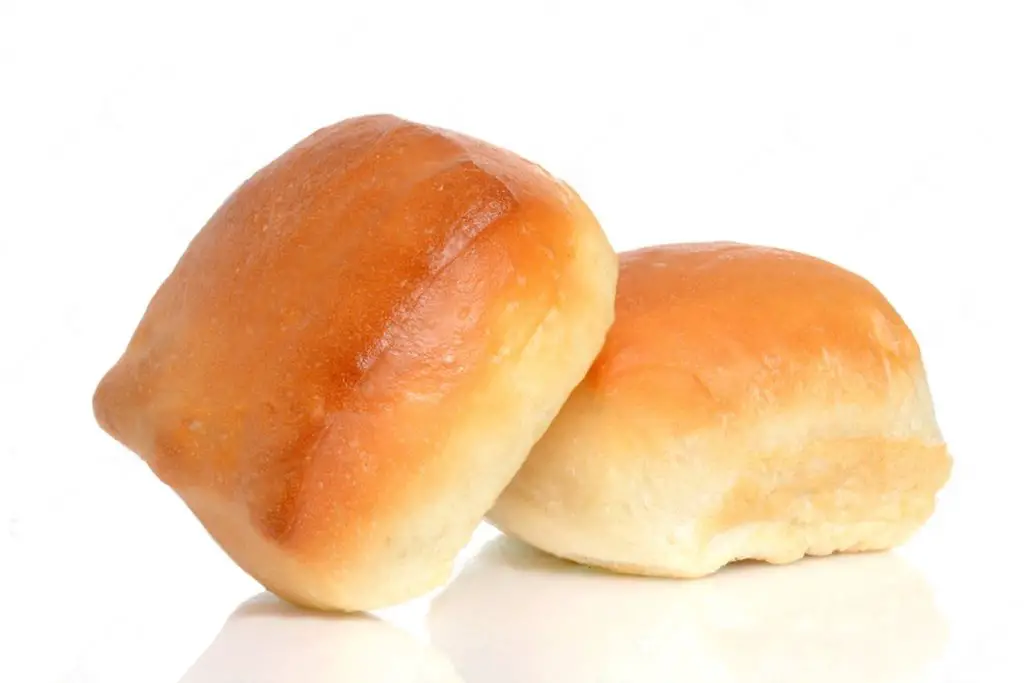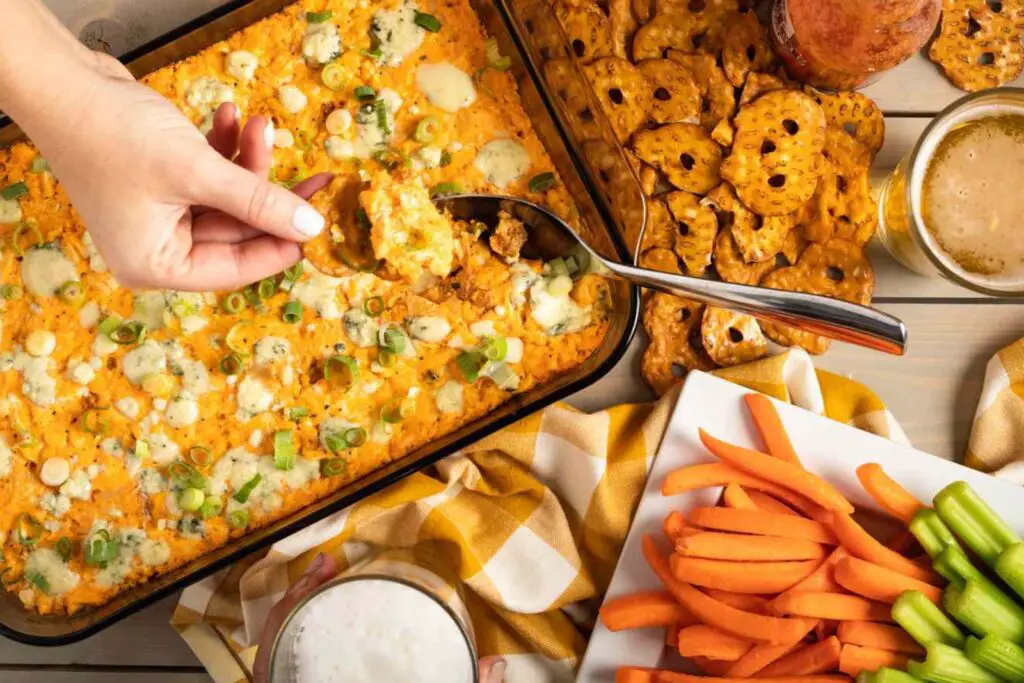
Meatloaf muffins are a delightful and convenient twist on the classic meatloaf. These individual-sized portions are not only tasty but also make meal planning and serving a breeze. Whether you’re preparing a large batch for a busy week ahead or simply have leftovers you want to preserve, freezing meatloaf muffins is an excellent option. Freezing ensures that you can enjoy these savory treats at your convenience without compromising their deliciousness.
Here’s a step-by-step guide on how to freeze meatloaf muffins:
Step 1: Cool the meatloaf muffins
Allowing the meatloaf muffins to cool completely at room temperature before freezing is an essential step in the process for several reasons.
Firstly, placing hot or warm muffins directly into the freezer can lead to uneven freezing. When hot food is introduced to the freezer, it raises the temperature of the surrounding air. As a result, the items already in the freezer may experience a slight thawing, and their freezing process may be interrupted. This fluctuation in temperature can create ice crystals within the food, affecting its texture and overall quality once thawed and reheated.
By cooling the meatloaf muffins to room temperature before freezing, you allow them to gradually lower in temperature. This gradual cooling process ensures that the muffins freeze uniformly and without causing any damage to their internal structure. It helps maintain the integrity of the ingredients and prevents the formation of large ice crystals, which can negatively impact the taste and texture of the meatloaf muffins when thawed later.
Secondly, cooling the meatloaf muffins at room temperature also reduces the risk of bacterial growth. When food is hot, it enters the “danger zone” temperature range between 40°F (4°C) and 140°F (60°C), where bacteria can multiply rapidly. By allowing the muffins to cool down before freezing, you minimize the time they spend within this critical temperature range, reducing the likelihood of bacterial contamination and foodborne illnesses.
Moreover, cooling the meatloaf muffins before freezing prevents condensation from forming inside the storage container. If hot food is sealed in a container and placed directly into the freezer, the warm air trapped inside the container can condense and turn into moisture as it cools down. This condensation can negatively impact the quality of the muffins and promote freezer burn, which can cause dryness and off-flavors over time.
Step 2: Prepare your freezing supplies
Preparing your freezing supplies in advance is crucial to ensure a smooth and effective freezing process for your meatloaf muffins. Each item serves a specific purpose in safeguarding the quality and integrity of the muffins during freezing and storage.
- Baking Sheet or Tray:
A baking sheet or tray is used to hold and support the individual meatloaf muffins during the initial freezing phase. It provides a flat surface for the muffins to rest on, ensuring that they maintain their shape and don’t stick together. Additionally, the baking sheet allows for proper airflow around each muffin, promoting even freezing. Make sure the baking sheet or tray you choose fits comfortably in your freezer without any overcrowding.
- Parchment Paper or Silicone Liners:
Lining the baking sheet or tray with parchment paper or silicone liners is essential to prevent the meatloaf muffins from sticking to the surface. Meatloaf can be sticky, and without the liners, you may encounter difficulties when trying to remove the frozen muffins from the tray. The liners also help maintain the cleanliness of the baking sheet, making cleanup easier afterward.
- Airtight Containers or Freezer-Safe Bags:
Once the meatloaf muffins are flash-frozen, they need to be transferred to airtight containers or freezer-safe bags for long-term storage. Airtight containers and bags create a barrier that prevents air and moisture from entering, minimizing the risk of freezer burn and maintaining the quality of the muffins over time. Freezer-safe bags are particularly useful as they can conform to the shape of the muffins, maximizing storage space in the freezer.
By gathering these essential freezing supplies, you ensure that you have everything ready when the meatloaf muffins are cooled and ready for freezing. This preparation saves time and reduces the risk of any mishaps during the process. The proper use of a baking sheet or tray, parchment paper or silicone liners, and airtight containers or freezer-safe bags ensures that your meatloaf muffins remain in excellent condition while in the freezer. When it’s time to enjoy them later, you’ll be grateful for the effort you put into their proper freezing and storage, as they will taste just as delicious as when they were freshly baked.
Step 3: Line the baking sheet
Lining the baking sheet or tray with parchment paper or silicone liners is a crucial step in the freezing process of meatloaf muffins. This simple but effective technique offers several benefits that contribute to the overall success of freezing and storing the muffins.
- Non-Stick Surface: Meatloaf mixtures can be sticky due to the combination of various ingredients, including ground meat, eggs, and binders like breadcrumbs. Without a non-stick surface, the meatloaf muffins may adhere to the baking sheet or tray, making it challenging to remove them once they are frozen solid. By using parchment paper or silicone liners, you create a non-stick barrier between the meatloaf mixture and the baking surface, ensuring that the muffins retain their individual shapes and are easy to handle.
- Easy Removal: When the meatloaf muffins are fully frozen, they can be quite delicate. Attempting to remove them from the baking sheet without a liner could lead to breakage or deformation, affecting their appearance and texture. With parchment paper or silicone liners in place, you can effortlessly lift the frozen muffins off the sheet one by one, without any damage or mess.
- Clean and Tidy Process: Lining the baking sheet with parchment paper or silicone liners helps maintain a clean and tidy workspace. The liners prevent any residue or drippings from sticking to the baking sheet, making cleanup much easier. This is especially useful when dealing with sticky meatloaf mixtures, as it prevents the need for scrubbing and scraping off stuck-on bits after the freezing process.
- Versatility: Both parchment paper and silicone liners are versatile and can be used in various cooking and baking applications. So, if you have extras on hand, you can utilize them for other culinary projects, making them a handy addition to your kitchen supplies.
Step 4: Arrange the meatloaf muffins for flash-freezing
Arranging the meatloaf muffins on the lined baking sheet and flash-freezing them is a crucial step to ensure that each muffin freezes individually and retains its shape and texture. This process offers several advantages that contribute to the overall quality and convenience of freezing meatloaf muffins.
- Individual Freezing: Placing each meatloaf muffin separately on the baking sheet ensures that they freeze individually without sticking together. If the muffins were placed too close to each other on the baking sheet, they might fuse together during freezing, making it difficult to separate them later. By giving them enough space, you prevent this issue and ensure that each muffin remains distinct and easy to handle.
- Proper Airflow: Leaving space between the muffins on the baking sheet allows for proper airflow during the freezing process. Cold air circulates around each muffin, facilitating uniform and efficient freezing. This prevents the formation of large ice crystals within the muffins, which can affect their texture and taste when thawed and reheated.
- Retaining Shape: Flash-freezing the meatloaf muffins helps them retain their individual shapes. When foods freeze slowly, ice crystals tend to form and grow larger, leading to potential cell damage and loss of texture. Flash-freezing, which involves freezing the muffins quickly at a very low temperature, minimizes the size of ice crystals and helps the muffins maintain their original form and structure.
- Time Efficiency: The flash-freezing process is relatively quick compared to regular freezing methods. Allowing the meatloaf muffins to freeze for about 1 to 2 hours is usually sufficient to reach the desired firmness. This time-saving approach enables you to move on to the next steps of the freezing process promptly.
Step 5: Package the meatloaf muffins
Packaging the flash-frozen meatloaf muffins in airtight containers or freezer-safe bags is a critical step in the freezing process that helps preserve their quality and prevent freezer burn. Proper packaging ensures that the muffins stay fresh and flavorful, allowing you to enjoy them at their best when you decide to thaw and reheat them later.
- Airtight Containers or Freezer-Safe Bags: Airtight containers and freezer-safe bags create a protective barrier around the meatloaf muffins, sealing them off from the external environment. This prevents any air from entering the packaging and coming into contact with the muffins. Exposure to air can lead to freezer burn, which is the result of moisture loss from the food’s surface, causing dry, discolored, and off-flavored areas. By using airtight containers or bags, you safeguard the muffins from this unwanted effect and maintain their taste and texture.
- Removing Excess Air: When using freezer-safe bags, it’s essential to remove as much excess air as possible before sealing them. Excess air trapped inside the bag can contribute to freezer burn and adversely affect the quality of the meatloaf muffins over time. One effective method to remove excess air is to gently press the bag and carefully squeeze out the air before sealing it shut. Alternatively, you can use a vacuum sealer if available, which efficiently removes air and creates a tight seal.
- Storing in Individual Portions: If you plan to freeze the meatloaf muffins for separate servings, it’s a good idea to package them individually. This way, you can easily take out only the number of muffins you need without having to thaw the entire batch. Individual portions also allow for faster and more even reheating, reducing the risk of overcooking.
Step 6: Label and date the packages
Labeling and dating the packages of frozen meatloaf muffins is an essential step in the freezing process that offers numerous practical benefits for organization, food safety, and overall convenience.
- Keeping Track of Contents: Labeling each container or bag with the contents, in this case, “meatloaf muffins,” allows you to easily identify what’s inside without having to open or guess. This is especially helpful when you have various frozen items in the freezer, as it saves you time and prevents unnecessary searching.
- Monitoring Storage Time: By adding the date of freezing to the label, you create a reference point for how long the meatloaf muffins have been in the freezer. Frozen foods, including meatloaf muffins, have optimal quality within a certain timeframe. Labeling with the freezing date helps you keep track of this time frame, ensuring that you consume the muffins before their quality might begin to degrade.
- Practicing FIFO (First-In, First-Out): Labeling the packages with the date of freezing enables you to practice the first-in, first-out method. This means using the oldest frozen items before newer ones. By following this approach, you can rotate your frozen food stock and avoid the risk of items being forgotten or overlooked, leading to potential food waste.
- Food Safety: Knowing how long the meatloaf muffins have been frozen allows you to gauge their safety for consumption. While frozen foods generally remain safe indefinitely if stored at 0°F (-18°C) or below, their quality can decline over time. By labeling and tracking the freezing date, you can ensure that you consume the muffins within the recommended time frame for best taste and texture.
- Organized Freezer: Proper labeling contributes to an organized freezer. When all items are clearly labeled, you can easily find what you need without having to rummage through the freezer and disturb other items. This saves time and reduces the chances of freezer burn or damage to other frozen items.
- Meal Planning: Having labeled packages in the freezer helps with meal planning and preparation. You can quickly see what options you have available and make choices accordingly, making mealtime more efficient and enjoyable.
Step 7: Store in the freezer
Storing the labeled meatloaf muffins in the coldest part of your freezer is the final step in the freezing process, ensuring that they stay in excellent condition for an extended period. Proper storage is essential for preserving the taste, texture, and safety of the meatloaf muffins during their time in the freezer.
- Maintaining Quality: The coldest part of the freezer is where the temperature remains most consistent and stable. Placing the meatloaf muffins in this area helps maintain a consistently low temperature, which is crucial for preserving their quality. A stable freezing environment prevents the formation of large ice crystals and helps the muffins retain their original taste and texture when thawed and reheated.
- Preventing Freezer Burn: Freezer burn is a common issue that affects frozen food when air comes into contact with its surface. By storing the meatloaf muffins in the coldest part of the freezer and ensuring they are properly sealed in airtight containers or freezer-safe bags, you minimize the risk of freezer burn. This helps maintain the appearance, taste, and nutritional value of the muffins throughout their storage period.
- Organized Storage: Placing the labeled meatloaf muffins in the coldest part of the freezer also contributes to an organized storage system. By designating this area for long-term storage, you can easily access the muffins when needed without having to search through the entire freezer. This organization ensures that the muffins are protected and prevents them from being accidentally knocked around or damaged by other items.
- Recommended Storage Time: While frozen meatloaf muffins can remain safe to eat indefinitely when stored at 0°F (-18°C) or below, their quality is best maintained within a specific time frame. Generally, for optimal taste and texture, it’s recommended to consume frozen meatloaf muffins within three months of freezing. After this period, while they may still be safe to eat, the quality might start to decline gradually.
Other related questions
How do I defrost meatloaf muffins?
To defrost meatloaf muffins, transfer them from the freezer to the refrigerator. Allow them to thaw slowly and evenly overnight or for several hours until completely defrosted. Alternatively, you can use the defrost function on your microwave, following the manufacturer’s guidelines for safe and efficient thawing.
How do I reheat frozen meatloaf muffins?
To reheat frozen meatloaf muffins, preheat your oven to 350°F (175°C). Place the desired number of muffins on a baking sheet and heat for about 20-25 minutes or until they are heated through. Alternatively, you can use a microwave on a low power setting, but be cautious not to overheat, as it may affect the texture. Always check the internal temperature of the reheated muffins to ensure they are thoroughly heated before serving.
Can I refreeze meatloaf muffins?
Refreezing meatloaf muffins is generally not recommended. Once thawed, the muffins may have undergone some temperature fluctuations and bacterial growth, which can compromise their safety and quality. Refreezing can also lead to further moisture loss, affecting the texture and taste of the muffins. It’s best to consume the thawed meatloaf muffins within a short period to ensure optimal freshness and minimize the risk of foodborne illness.
How do I know if the meatloaf muffins have gone bad after being frozen?
To determine if meatloaf muffins have gone bad after being frozen, look for signs of freezer burn, such as dry and discolored patches on the surface. An off or rancid odor can also indicate spoilage. If the muffins show signs of mold, unusual texture, or a sour smell, discard them as they may no longer be safe to consume. Always use the FIFO (First-In, First-Out) method, and if the muffins have been stored for an extended period beyond their recommended storage time, it’s best to err on the side of caution and dispose of them.
Can I freeze meatloaf muffins with different fillings or flavors?
Yes, you can freeze meatloaf muffins with various fillings or flavors. Whether you have classic meatloaf muffins, ones with cheese, vegetables, or other additions, the freezing process remains the same. Just ensure they are cooled, arranged on a baking sheet, and flash-frozen individually before transferring to airtight containers or freezer-safe bags.
Can I freeze unbaked meatloaf muffins?
Yes, you can freeze unbaked meatloaf muffins for later use. Prepare the muffins as usual, then arrange them on a baking sheet and flash-freeze individually. Once frozen, transfer them to airtight containers or freezer-safe bags. When you’re ready to bake, you can simply place the frozen unbaked muffins into the oven, adjusting the cooking time as needed.
Can I freeze meatloaf muffins with ketchup or sauce toppings?
Yes, you can freeze meatloaf muffins with ketchup or sauce toppings. However, it’s recommended to freeze them without the toppings initially. Once the muffins are fully frozen and stored in airtight containers or bags, you can add the sauce or toppings before reheating to preserve their texture and prevent sogginess.
Can I freeze meatloaf muffins with eggs and dairy ingredients?
Yes, you can freeze meatloaf muffins that contain eggs and dairy ingredients. The freezing process won’t negatively affect the taste or texture of these muffins. Just ensure that the muffins are fully cooled before freezing to prevent condensation inside the containers.








